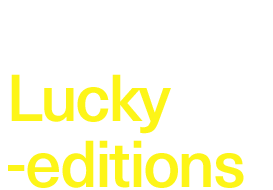General information about our services, the terms we use, and also how to take care of your prints
LUCKY GROUP ©
Lucky-editions, platform for production, presentation and sale of contemporary graphic art
Lucky Art consultancy and Designstudio
Gothersgade 163.3 1123 Copenhagen K, Denmark
TEL.: +45 30230677, Mail: info@lucky7.dk
We also work with a cultural outreach program that aims to reach audiences in areas that may be less likely to engage with typical gallery programming. We are active in collaborations, commissioning and producing limited edition graphic works as well as small objects. We also provide independent art consulting services.
The office is led by Kim Lykke as a part of Lucky-Group*. Kim Lykke is a philosophy graduate from the University of Copenhagen with research interests in Aesthetics and Philosophy of Art. Kim has over 37 years of experience as a working artist, graphic designer, publisher, and art consultant to corporations, public institutions, and individuals. It all began with his involvement with the punk/alternative scene in the early 80s, (bassplayer and co-founder of WURST, performance and artist space in Copenhagen)
Where do you ship to and how long does it take?
We ship worldwide. Please allow 3 - 5 business days for us to process, pack and ship your unframed edition, and 28 days for framed prints and sculptural editions.
PLEASE NOTE: BUYER IS RESPONSIBLE FOR ALL IMPORT DUTIES.
Returns Given the unique nature of our products, Lucky-editions does not accept returns. If your order is incorrect or arrives damaged, please contact us immediately so we can resolve the matter.
About the terms we use and how to take care of your prints
Lucky art consultancy
Read about our art consulting service here
Lucky designstudio
Read about our designstudio here
Framing services If you are interested in having your artwork framed, please feel free to contact us at info@lucky7.dk and we'd be happy to assist you.
We also offer a Ready made Standard framing for our low-cost prints for customers in the Copenhagen area.
The frames offer a contemporary, clean look and is an affordable option for framing our open edition art prints.
Prints are placed straight in against the glass, taped and strung ready to hang.
We do not offer delivery to customers outside the Copenhagen area as shipping would increase both the risk of damaging the artwork during shipping and the transport costs due to additional weight.
However Framed works can be collected from us.
PLEASE NOTE: ALL PRICES AND AVAILABILITIES LISTED ARE SUBJECT TO CHANGE WITHOUT NOTICE. VAT IS DEDUCTIBLE FOR NON-EU SHIPPING DESTINATIONS. BUYER IS RESPONSIBLE FOR ALL IMPORT DUTIES. OWNERSHIP IS NOT TRANSFERABLE BEFORE FULL PAYMENT IS RECEIVED.
